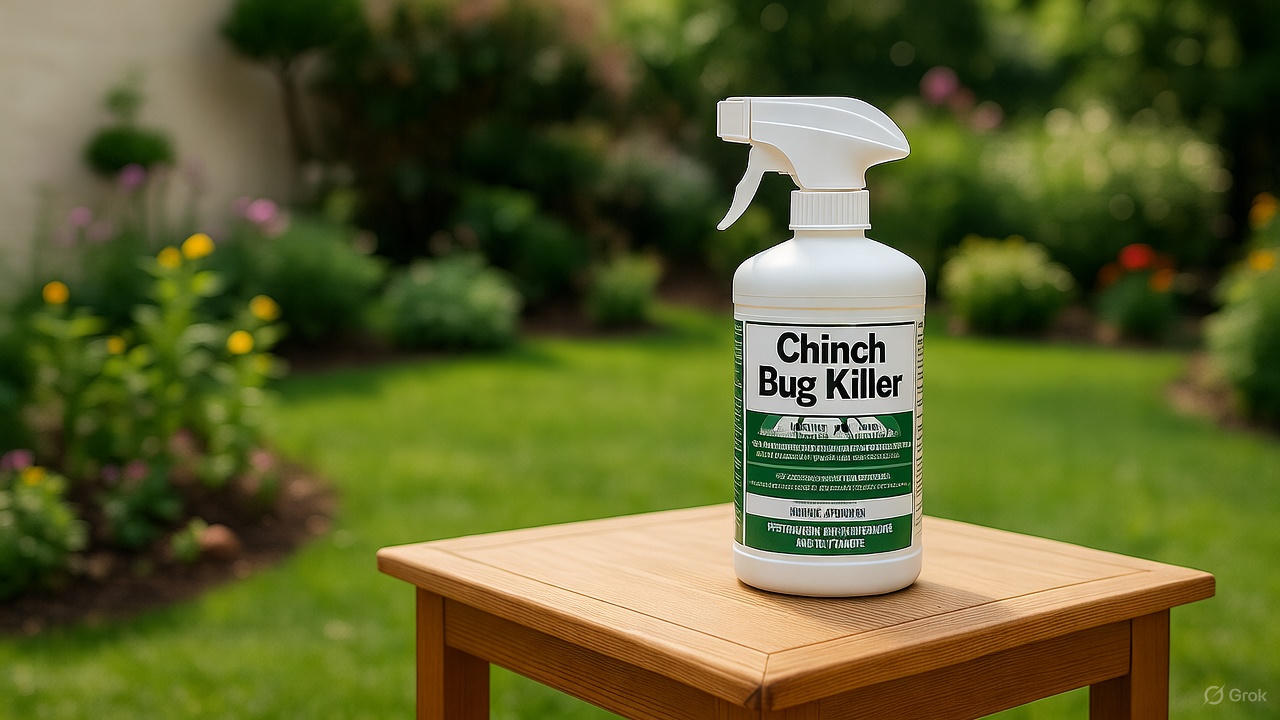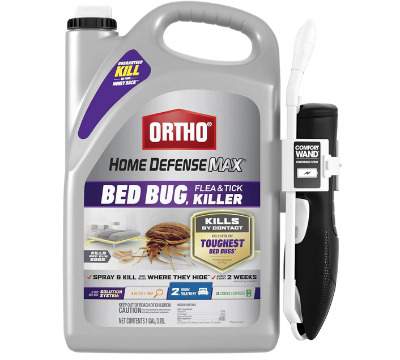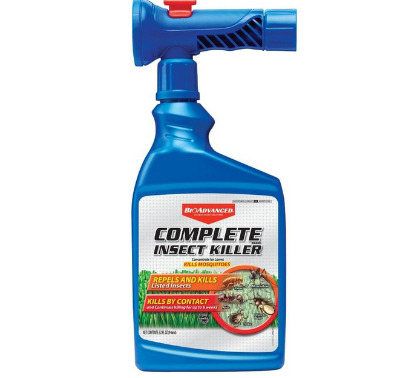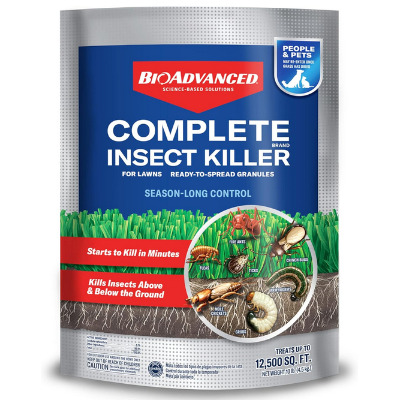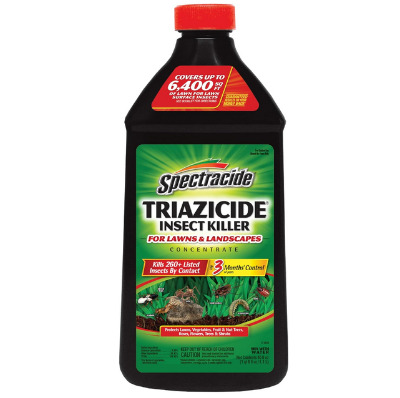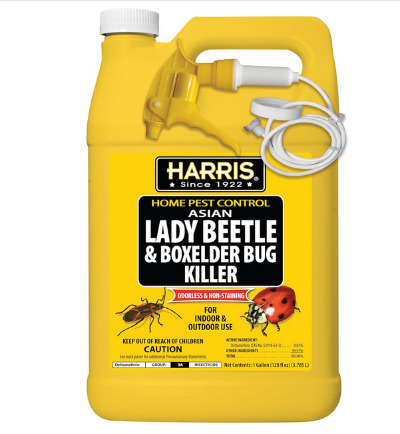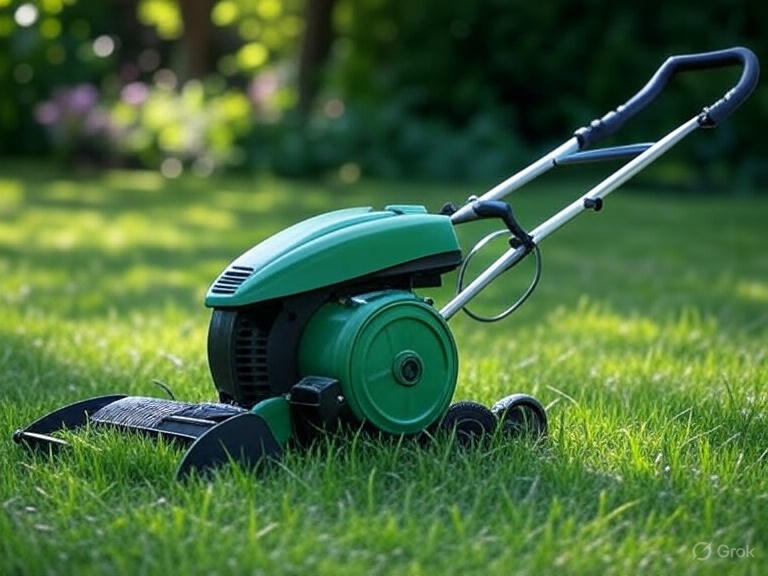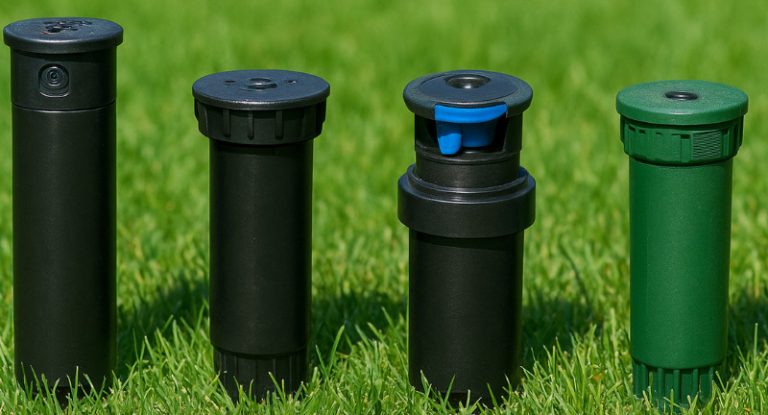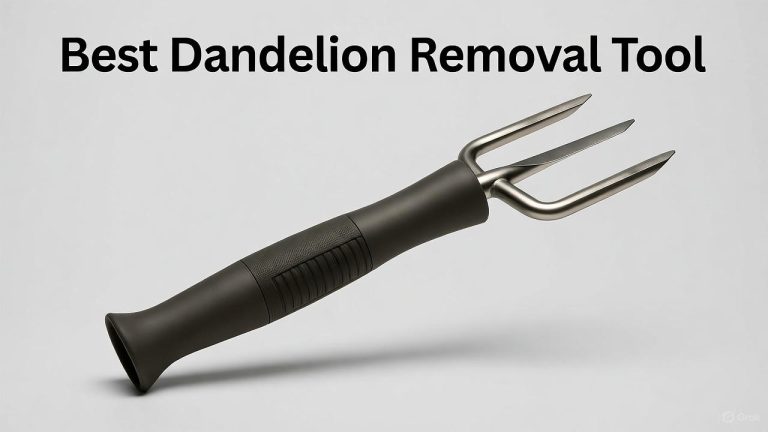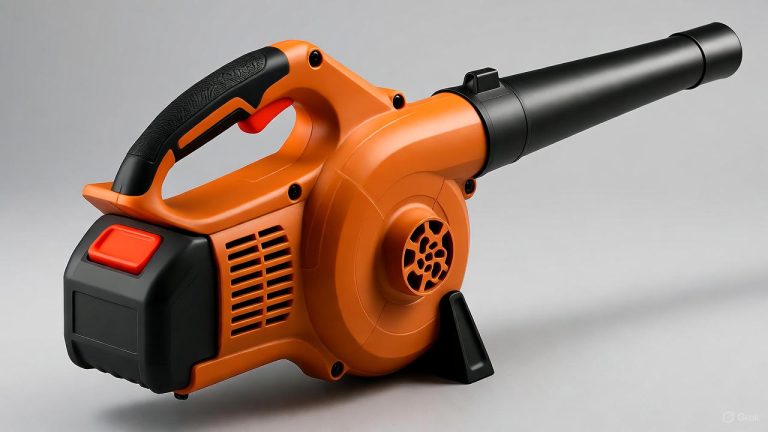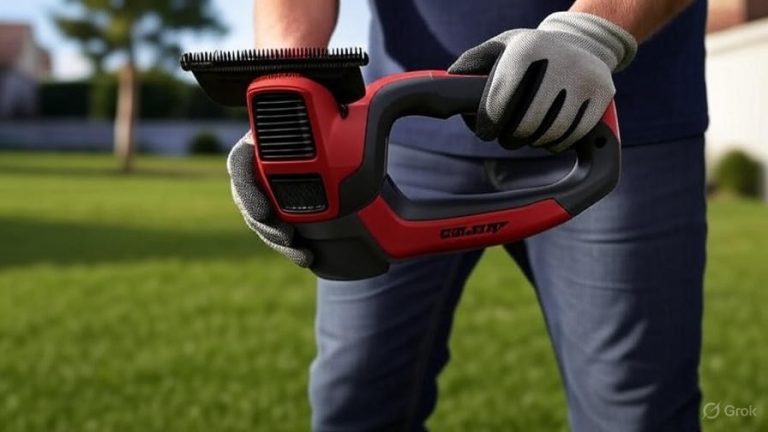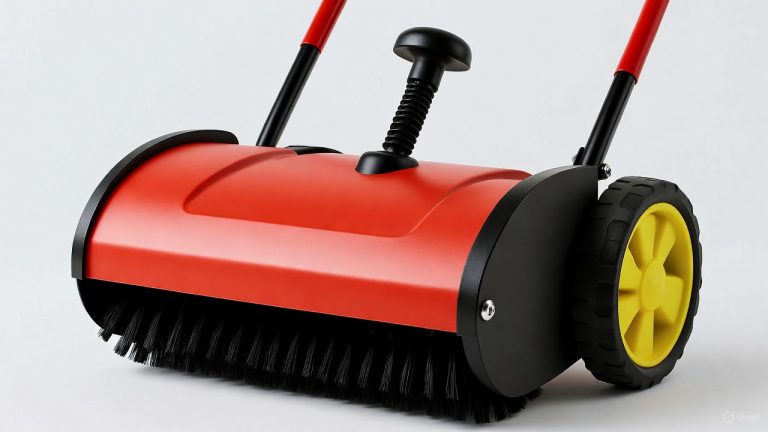5 Best Chinch Bug Killer In 2025
Chinch bugs can transform your lush, green lawn into a patchy, brown disaster in just weeks. These tiny pests feed on grass blades, injecting toxic saliva that prevents water absorption and causes widespread damage. Homeowners across North America battle these destructive insects every growing season, searching for effective solutions to protect their turf investment.
The battle against chinch bugs requires the right weapons. Modern insecticides have evolved to target these pests while maintaining lawn health and environmental safety. This comprehensive review examines five top-performing products that deliver results against chinch bug infestations.
Each product in this roundup offers unique advantages for different lawn care situations. Some provide rapid knockdown of adult insects, while others focus on long-term prevention through systemic action. Understanding these differences helps you make an informed decision based on your specific lawn conditions, infestation severity, and application preferences.
Understanding Chinch Bugs and Their Damage Patterns
Chinch bugs are small insects measuring about 1/5 inch long with distinctive white wings marked by black triangles. They thrive in hot, dry conditions and target stressed grass areas first. St. Augustine grass and other warm-season varieties face particular vulnerability to these pests.
The damage begins with small, irregular yellow patches that expand rapidly during warm weather. As chinch bugs multiply, they form colonies that can contain thousands of individuals, all feeding simultaneously on grass stems near the soil line. The affected grass turns brown and dies because the bugs’ toxic saliva disrupts the plant’s vascular system.
Early detection proves critical for successful control. Homeowners can perform a simple flotation test by pushing a metal can with both ends removed into the soil at the edge of damaged areas. Fill the can with water and watch for chinch bugs floating to the surface within five to ten minutes. This confirms active infestations requiring immediate treatment.
Prevention strategies include proper watering, dethatching, and maintaining optimal grass height. However, once populations establish themselves, targeted insecticide application becomes necessary to prevent total lawn loss.
Product Reviews: Top Chinch Bug Killers
1. Ortho Home Defense Max Bed Bug, Flea and Tick Killer with Comfort Wand
The Ortho Home Defense Max arrives in a convenient one-gallon jug equipped with an ergonomic Comfort Wand that eliminates hand fatigue during extended application sessions. While marketed primarily for indoor pests, this formula contains active ingredients effective against various outdoor insects including chinch bugs.
The spray mechanism delivers precise application control, allowing you to target specific lawn areas where chinch bugs congregate. The extended wand keeps you at a comfortable distance from treatment zones while providing thorough coverage. The trigger design requires minimal effort to operate, making large-scale lawn treatments less physically demanding.
This product works through contact action, meaning it kills insects immediately upon exposure. The formula penetrates grass thickets and reaches bugs hiding at the soil surface. After application, the active ingredients provide residual protection that continues eliminating newly emerging chinch bugs for several weeks.
The one-gallon capacity covers approximately 1,500 square feet when used according to label directions for outdoor pest control. Users appreciate the ready-to-use formula that requires no mixing or measuring. Simply attach the wand, adjust the spray pattern, and begin treating affected areas.
Application should occur during early morning or late evening hours when chinch bugs are most active near the grass surface. The formula dries quickly, allowing pets and family members to return to treated areas once surfaces dry completely. Avoid applying before rainfall, as water can wash away the product before it achieves maximum effectiveness.
Some homeowners report excellent results when combining this spray with preventive lawn care practices. Regular applications every three to four weeks during peak chinch bug season help maintain protection. The transparent jug allows you to monitor remaining product levels and plan refills accordingly.
The main limitation involves coverage area compared to concentrated products. Treating large lawns requires multiple gallons, which increases overall cost. However, the convenience and ease of use offset this disadvantage for homeowners prioritizing simple application methods over bulk economy.
2. BioAdvanced Complete Insect Killer for Lawns, Ready-to-Spray
BioAdvanced Complete Insect Killer delivers powerful systemic action that protects grass from below and above ground. The 32-ounce bottle connects directly to your garden hose, transforming into a spray system covering up to 5,334 square feet. This coverage area makes it ideal for medium to large lawns battling widespread chinch bug problems.
The systemic formula absorbs into grass roots and moves throughout the plant tissue, creating a protective barrier that kills feeding insects. This inside-out protection lasts up to three months, providing season-long defense against recurring chinch bug generations. The product targets over 30 different lawn insects, making it versatile for comprehensive pest management.
Application occurs through a simple hose-end sprayer attachment. Connect the bottle to your hose, turn on the water, and the built-in metering system automatically dilutes the concentrate to the correct strength. The spray pattern covers large areas quickly, completing most lawn treatments in under thirty minutes.
The formula contains bifenthrin, a synthetic pyrethroid that disrupts insect nervous systems. This active ingredient works rapidly on contact while also providing the systemic protection that makes this product particularly effective against chinch bugs. Treated grass becomes toxic to feeding insects, breaking their life cycle and preventing population rebounds.
Visible results typically appear within 24 to 48 hours after application. Dead and dying chinch bugs accumulate near treated areas, confirming the product’s effectiveness. Grass begins recovering within one to two weeks as insect pressure decreases and normal water uptake resumes.
The three-month protection period aligns perfectly with typical chinch bug activity seasons. A single spring application often provides coverage through the peak summer months when these pests cause the most damage. Some regions with extended warm seasons may require a second application in late summer.
Users praise the product’s ease of use and reliable performance. The hose-end delivery system ensures even distribution across treated areas, eliminating concerns about missed spots or over-concentrated applications. The bottle clearly marks the coverage rate, helping homeowners calculate how many bottles they need for their lawn size.
Environmental considerations include avoiding application near water features, as runoff can harm aquatic organisms. The product should dry completely before allowing pets or children onto treated areas. Following label instructions carefully ensures both safety and maximum effectiveness.
3. BioAdvanced Complete Brand Insect Killer for Lawns, Granules
The granular formulation from BioAdvanced offers an alternative application method for homeowners who prefer spreader-based treatments over spraying. The 10-pound bag covers up to 10,000 square feet, providing extensive protection for large properties. These granules work equally well against chinch bugs and numerous other lawn-damaging insects.
Granular insecticides offer several advantages over liquid formulations. They’re easier to apply in windy conditions, don’t require mixing equipment, and allow precise coverage control through calibrated spreader settings. The solid particles settle into the grass canopy and reach the soil surface where chinch bugs feed and reproduce.
Application requires a standard broadcast or drop spreader set according to the package instructions. Walk the spreader across your lawn in overlapping passes to ensure complete coverage. The granules should be watered in immediately after application to activate the formula and move active ingredients into the root zone.
This watering-in process proves critical for granular product effectiveness. Use at least a quarter-inch of water through irrigation or rainfall to dissolve the granules and distribute the insecticide throughout the soil profile. This creates the systemic protection that makes the product so effective against chinch bugs.
The active ingredient imidacloprid works as a neonicotinoid insecticide that targets the nervous system of feeding insects. As grass roots absorb the chemical, it moves into all plant tissues. Chinch bugs ingesting treated grass tissue quickly stop feeding and die within days.
Protection duration extends up to three months from a single application, matching the liquid formulation’s performance. The granular format stores more conveniently than liquid products and doesn’t risk freezing during storage in cold climates. The resealable bag preserves unused granules for future treatments.
Homeowners report excellent results when applying granules as part of their regular lawn maintenance routine. Many combine application with fertilization schedules, using separate spreader passes to avoid product interactions. The granules don’t stain concrete or hardscapes, though they should be swept off paved surfaces before watering in.
The product works best when applied to dry grass, allowing granules to fall through the canopy to the soil surface. Wet grass catches granules in the leaf blades, reducing their effectiveness. Plan applications for dry morning periods followed by afternoon irrigation.
Cost efficiency stands out as a major advantage. The 10-pound bag typically costs less per square foot of coverage compared to ready-to-spray formulations. Homeowners treating large areas save considerably while achieving identical pest control results.
Some users prefer combining granular applications with liquid spot treatments for severe infestations. Apply granules for broad protection, then use liquid sprays to knock down heavy chinch bug concentrations in specific areas. This combination approach delivers both immediate and long-term control.
4. Spectracide Concentrate Triazicide Lawn & Landscapes Insect Killer
Spectracide Triazicide arrives as a concentrated formula requiring dilution before application. The 40-ounce bottle makes up to 10 gallons of finished spray, covering approximately 16,000 square feet. This concentration provides exceptional value for homeowners managing large lawns or multiple properties.
The concentrate format allows flexible mixing ratios for different pest pressure levels. Standard applications use two ounces of concentrate per gallon of water. Heavy infestations may warrant stronger concentrations, while maintenance applications can use slightly weaker solutions. This flexibility helps optimize both effectiveness and economy.
Application occurs through pump sprayers, hose-end applicators, or professional spray equipment. The product mixes easily without specialized equipment, dissolving completely in water within seconds. The clear amber liquid allows visual confirmation of proper mixing and dilution.
Gamma-cyhalothrin serves as the active ingredient, belonging to the synthetic pyrethroid class of insecticides. This compound disrupts insect nervous systems on contact while providing residual activity lasting several weeks. The formula kills chinch bugs rapidly while preventing new infestations from establishing.
Results appear within hours of application as treated insects exhibit paralysis and death. The fast knockdown action makes this product ideal for emergency treatments when chinch bug damage is spreading rapidly. Dead insects remain visible on the lawn surface for several days before decomposing naturally.
The residual protection continues eliminating newly hatched chinch bugs for up to four weeks after application. This extended activity period reduces the need for frequent reapplications. Most homeowners achieve season-long control with two to three applications spaced one month apart.
The product targets over 260 different insect species, making it a comprehensive lawn pest solution. Besides chinch bugs, it controls armyworms, sod webworms, ants, ticks, fleas, and numerous other common lawn pests. This broad-spectrum activity eliminates the need for multiple specialized products.
Users appreciate the concentrate’s shelf stability and long storage life. Unopened bottles maintain full potency for several growing seasons when stored in cool, dry locations. Partially used bottles remain effective when properly sealed and stored away from extreme temperatures.
Safety considerations include wearing protective equipment during mixing and application. The concentrate requires more careful handling than ready-to-use formulations. Gloves, long sleeves, and eye protection prevent skin and eye contact with the undiluted product.
The cost savings prove substantial for large lawn owners. One bottle provides enough concentrate for multiple complete lawn treatments. The per-application cost falls significantly below ready-to-spray alternatives while delivering equivalent or superior results.
Application timing affects results significantly. Early morning treatments when dew is present help the spray adhere to grass blades and penetrate to the soil surface where chinch bugs hide. Avoid applications during hot, sunny midday periods when spray droplets may evaporate before reaching target insects.
5. Harris Asian Lady Beetle, Japanese Beetle, and Box Elder Killer
Harris delivers a specialized formula in a one-gallon jug designed for various beetle species but equally effective against chinch bugs. The odorless, non-staining formula provides extended residual control lasting up to two weeks per application. This product stands out for its safe use around home foundations and landscape features.
The liquid spray arrives ready to use without mixing or dilution. A built-in trigger sprayer provides comfortable application control for spot treatments and perimeter applications. The ergonomic design reduces hand strain during extended treatment sessions.
The formula combines fast-acting contact kill with residual activity that continues eliminating insects for days after application. This dual-action approach ensures both immediate relief and ongoing protection. The non-staining property makes it safe for use on decks, patios, and other surfaces where chinch bugs may harbor.
Active ingredients include synthetic pyrethroids that target insect nervous systems. The formula spreads easily across leaf surfaces and penetrates grass thickets where chinch bugs congregate. The odorless formulation addresses concerns about chemical smells near homes and entertainment areas.
Application focuses on perimeter treatments around foundations, lawn edges, and transition zones between grass and landscape beds. These areas often harbor the highest chinch bug concentrations. Thorough coverage of these zones provides a protective barrier preventing bugs from spreading into healthy turf.
The gallon container covers approximately 2,000 square feet when used according to label directions. Multiple gallons may be necessary for treating entire lawns, though targeted application to problem areas often provides adequate control. Many users combine this product with granular treatments for comprehensive protection.
Extended residual activity means fewer applications throughout the season. The two-week protection period allows bi-weekly treatment schedules that maintain continuous control. This frequency works well for homeowners who prefer regular, lighter applications over infrequent, heavy treatments.
Drying time averages two to four hours depending on temperature and humidity. Once dry, treated surfaces are safe for pet and human contact. The fast-drying formula minimizes disruption to outdoor activities and lawn use.
Users report success using this product as part of integrated pest management programs. Regular applications combined with proper lawn care practices keep chinch bug populations below damaging thresholds. The non-staining feature proves particularly valuable for treating areas near pools, outdoor furniture, and play equipment.
The formula works effectively in various weather conditions, though application before rain should be avoided. The product needs several hours to bind to treated surfaces. Once bonded, it resists wash-off from irrigation or light rainfall.
Storage requirements are minimal. The opaque container protects the formula from light degradation. Room temperature storage in garages or sheds maintains product effectiveness for extended periods.
Application Strategies for Maximum Effectiveness
Successful chinch bug control requires proper product application techniques. Begin by identifying active infestation areas through visual inspection and flotation tests. Focus initial treatments on these zones to knock down existing populations quickly.
Timing applications to coincide with chinch bug life cycles improves results dramatically. Early season treatments target overwintering adults before they reproduce. Spring applications prevent population explosions that occur during warm weather. Follow-up treatments eliminate subsequent generations hatching from eggs laid earlier.
Water management plays a crucial role in treatment success. Light irrigation before application brings chinch bugs closer to the grass surface where contact insecticides work best. Post-application watering helps granular products penetrate the root zone and activates systemic formulations.
Mowing height affects insecticide penetration and chinch bug exposure. Maintain grass at recommended heights for your turf species. Taller grass provides shade that keeps the soil surface cool, making it less attractive to chinch bugs. However, excessively tall grass can intercept sprays before they reach the soil surface.
Spray equipment maintenance ensures consistent application rates and coverage. Clean sprayers thoroughly after each use to prevent clogging and cross-contamination. Calibrate spreaders annually to maintain accurate granule distribution rates.
Weather conditions influence application decisions. Apply liquid products when winds are calm to prevent drift. Avoid treating immediately before heavy rainfall that could wash products away. Temperature extremes may reduce insecticide effectiveness, so target mild conditions when possible.
Personal protective equipment protects applicators from chemical exposure. Wear long pants, long sleeves, gloves, and eye protection when handling concentrated products. Follow all label safety instructions carefully.
Record keeping helps track treatment effectiveness and plan future applications. Note application dates, products used, rates applied, and results observed. This information guides adjustments to improve control in subsequent seasons.
Integrated Pest Management for Long-Term Control
Chemical treatments work best when combined with cultural practices that create unfavorable conditions for chinch bugs. Healthy, vigorous grass resists pest damage better than stressed turf. Regular fertilization, proper irrigation, and appropriate mowing create resilient lawns that recover quickly from insect pressure.
Thatch management reduces chinch bug habitat. These pests thrive in thick thatch layers that provide protection and ideal microclimate conditions. Core aeration and dethatching keep thatch at acceptable levels below one-half inch.
Irrigation practices significantly impact chinch bug populations. Deep, infrequent watering encourages deep root growth and creates less favorable surface conditions for these pests. Frequent shallow watering stresses grass while creating ideal conditions for chinch bug proliferation.
Grass species selection affects susceptibility to chinch bug damage. Some varieties show natural resistance or tolerance to these pests. Consult local extension services for recommendations on resistant cultivars suited to your region.
Natural predators including big-eyed bugs, lacewings, and certain birds feed on chinch bugs. Maintaining diverse landscape plantings supports these beneficial organisms. Avoid broad-spectrum insecticides that harm natural enemies when possible.
Soil health influences grass vigor and pest resistance. Regular soil testing identifies nutrient deficiencies and pH imbalances. Correcting these problems through appropriate amendments strengthens grass and improves its ability to withstand and recover from pest damage.
Monitoring programs detect infestations early when control is easiest and least expensive. Weekly lawn inspections during warm weather help identify problems before extensive damage occurs. Early intervention prevents small populations from exploding into major infestations.
Safety Considerations and Environmental Impact
All insecticides require careful handling to protect human health and the environment. Read and follow all label instructions completely. These directions provide critical safety information and legal requirements for proper use.
Children and pets should remain off treated areas until products dry completely. Some formulations require longer waiting periods. Post warning signs during and immediately after application to prevent accidental exposure.
Aquatic environments face particular risk from lawn insecticides. Prevent runoff into storm drains, streams, ponds, and other water bodies. Establish buffer zones around water features. Avoid application when heavy rain is forecast within 24 hours.
Beneficial insects including pollinators may be harmed by some insecticides. Avoid spraying flowering plants that attract bees and butterflies. Apply products during early morning or evening when pollinators are less active.
Proper storage prevents accidents and maintains product effectiveness. Store insecticides in original containers with labels intact. Keep products in locked cabinets away from children and pets. Maintain storage temperatures within ranges specified on labels.
Disposal of unused products and empty containers follows specific regulations. Never pour insecticides down drains or into natural areas. Contact local hazardous waste facilities for proper disposal options. Rinse empty containers thoroughly before recycling if permitted.
Drift prevention protects neighboring properties from unintended exposure. Use low-pressure spray settings and appropriate nozzles to minimize fine droplets. Avoid application during windy conditions. Shield sensitive plants near treatment areas.
Personal exposure minimization protects applicators. Change clothes and shower after completing applications. Wash application equipment thoroughly. Store contaminated clothing separately and launder before wearing again.
Cost Analysis and Value Considerations
Product costs vary significantly based on formulation type, concentration, and coverage area. Ready-to-use sprays offer convenience but typically cost more per square foot of coverage. Concentrated products require more effort but deliver better economy for large areas.
Granular formulations fall in the middle range for cost-effectiveness. They’re more expensive per treatment than concentrates but less than ready-to-spray options. Their ease of use and storage convenience justify the price for many homeowners.
Treatment frequency affects total seasonal costs. Products with extended residual activity reduce the number of applications needed. Calculate total season costs by multiplying single application costs by required treatments.
Professional application services charge between two and four times the product cost alone. However, pros provide equipment, expertise, and guaranteed results. Weigh DIY savings against professional convenience and effectiveness.
Bulk purchasing reduces per-unit costs for frequently used products. Buy concentrate in larger containers or granules in bulk bags for the best economy. Share bulk purchases with neighbors to maximize savings.
Generic and private-label products often contain identical active ingredients to name brands at lower prices. Compare ingredient lists and concentrations to identify equivalent products. Test generic alternatives on small areas before treating entire lawns.
Preventive treatments cost less than reactive emergency applications. Regular seasonal applications prevent severe infestations requiring multiple treatments. Budget for preventive programs rather than waiting for problems to develop.
Equipment investments improve application efficiency and reduce product waste. Quality sprayers and spreaders last many seasons and pay for themselves through accurate application and reduced product usage.
Product Comparison and Selection Guide
Each reviewed product offers distinct advantages for different situations. Homeowners with small to medium lawns benefit from ready-to-use options like Ortho Home Defense Max and Harris formulations. These products eliminate mixing hassles and provide precise application control for targeted treatments.
Large property owners achieve better economy with BioAdvanced granules or Spectracide concentrate. The coverage area and cost per square foot make these products ideal for expansive lawns. The initial investment in application equipment pays off through reduced product costs.
Severity of infestation influences product selection. Heavy chinch bug populations require fast-acting contact killers combined with residual protection. Lighter infestations or preventive treatments work well with systemic-only formulations.
Application equipment availability affects product choice. Homeowners with spreaders prefer granular options. Those with pump sprayers or hose-end applicators choose liquid formulations. Match product type to available equipment for best results.
Environmental concerns guide some homeowners toward products with shorter residual periods or lower toxicity profiles. Balance environmental considerations with effectiveness requirements for successful control.
Storage space limitations favor concentrated products with smaller container sizes. Ready-to-use gallons require more storage room but eliminate measuring and mixing equipment needs.
Physical abilities affect application preferences. Granular products with spreaders require less physical effort than pump sprayers for large areas. Hose-end sprayers fall in the middle for convenience and physical demands.
Conclusion
Effective chinch bug control protects your lawn investment and maintains the beauty of your outdoor spaces. The five products reviewed here represent proven solutions for various lawn sizes, budget levels, and application preferences. Success requires matching product characteristics to your specific situation.
BioAdvanced products deliver excellent systemic protection through both liquid and granular formulations. Their extended residual activity and broad-spectrum control make them versatile choices for comprehensive lawn pest management. The hose-end sprayer and granular options accommodate different application preferences.
Spectracide Triazicide provides exceptional value through concentrated formulation and large coverage capacity. This product serves large property owners best, offering professional-grade results at consumer-friendly prices. The fast knockdown and extended residual control handle severe infestations effectively.
Ortho Home Defense Max and Harris formulations excel for targeted spot treatments and perimeter applications. Their ready-to-use convenience and precision delivery systems work well for homeowners addressing localized problems or supplementing broadcast treatments.
Success ultimately depends on proper application timing, technique, and integration with sound lawn care practices. No single product eliminates chinch bugs permanently without supporting cultural practices. Combine chemical treatments with proper watering, fertilization, and maintenance for lasting results.
Start monitoring your lawn early each growing season. Detect chinch bug activity before populations explode and damage becomes extensive. Early intervention with appropriate products prevents minor problems from becoming major disasters. Your lawn will reward proper care with lush, healthy growth that resists pest damage season after season.

